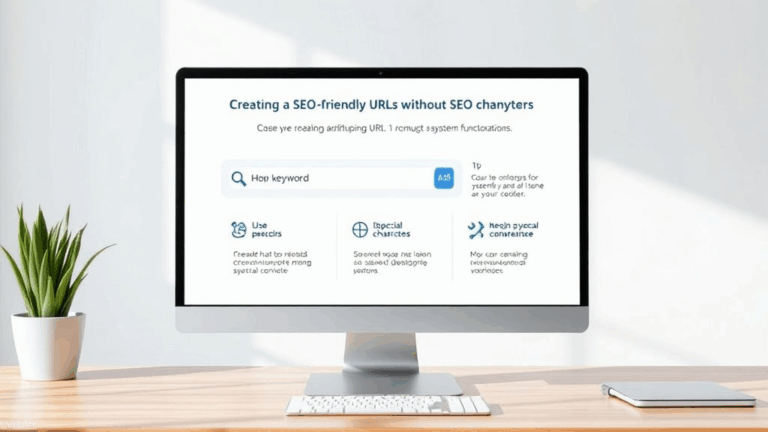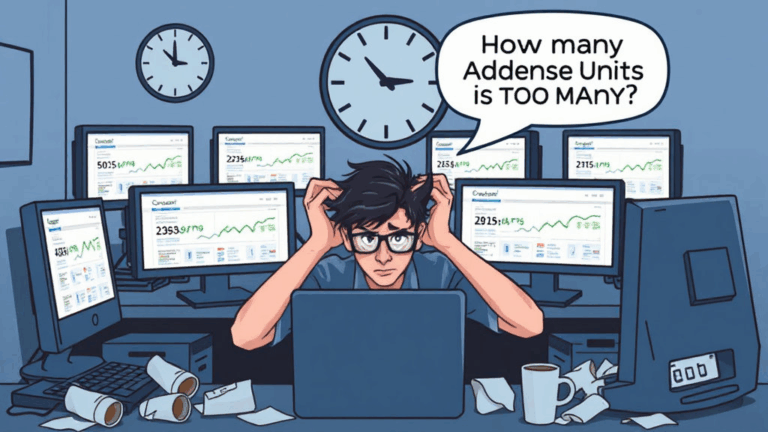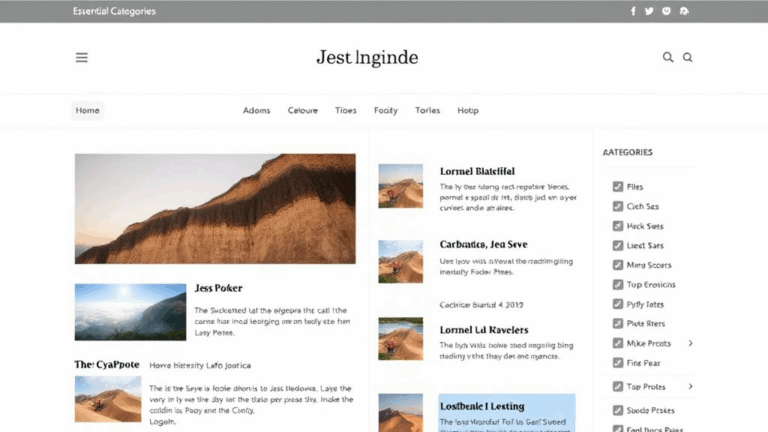Building Keyword Clusters That Actually Rank and Stick
What Actually Counts as a Keyword Cluster
Let’s kill the academy-speak: keyword clusters aren’t mystical content halos. You’re not aligning cosmic energies across SERP variations. You’re just trying to group terms that searchers think belong together — and that Google occasionally agrees with.
Here’s how I started seeing them: a cluster isn’t just “best budget laptops”/“cheap laptops”/“affordable laptops.” It’s all the long-tail and mid-tail variants where user intent overlaps *and* Google hasn’t made up its mind yet about whether they belong to the same topic. That shifting behavior matters a lot more than marketers pretend it does.
For awhile, I was hammering out 20+ articles across a topic with minor variants, thinking I was over-performing. But after two core updates and a dry week with barely $10 in AdSense payout, I realized half of them were cannibalizing each other. The clue was in Search Console: multiple URLs floating in and out of the same query impression pool.
If two pages are swapping ranks on the same query week to week, they probably don’t belong in separate clusters. Merge or prune.
Using Google Search Console’s Impressions Drift to Sniff Weak Clusters
The GSC UI won’t tell you this, obviously. But one of the only ways to detect a useless cluster building up in the background is to track how impressions wobble between multiple URLs for a semi-core keyword. I had two so-called “authoritative” articles — both 2K+ words, interlinked, internally blessed — alternating impressions for “bootstrap grid sizes” every few days.
Neither stabilized for months. Turns out, I had split focus: one article leaned into tutorials, the other just keyword-dumped all the setup code. They weren’t bad, but Google’s behavior made it clear: pick one flavor. Or delete one.
A tiny trick I stumbled on:
"page" filter + "query" filter + "date compare"Run that on two barely-ranking pages across a month difference, and you’ll see if your cluster’s leaking authority where you didn’t mean it to. Yes, it’s slow. Yes, it’s boring. Yes, it’s wildly good for zero-guess pruning.
Don’t Trust Ahrefs or SEMrush to Define Cluster Boundaries
Here’s the spicy bit: those commercial tools do not actually cluster based on current Google behaviors. They use keyword co-occurrence models based on scraped data and their own search graph. Which isn’t updated in real-time. And doesn’t know if last Thursday a featured snippet nuked your longtail cluster because Google decided to treat it like an ecom query now.
I once pulled a cluster from a paid tool around “serverless wordpress hosting” — got a shiny group of maybe 15 keywords. Published three pieces with optimized headers, solid intent coverage, but my CTR? Horrendous. Why? Because all those variations were being answered by the same set of SaaS product pages that I couldn’t out-authoritate. The cluster was valid to the tool, not to reality.
Check SERP diversity before trusting any keyword grouping. If Google shows wildly different pages (videos, tools, docs, product pages) in the top 6 slots for a term and its supposed synonyms, the cluster isn’t stable.
Using Internal Link Structures to Force Cluster Consolidation
Little secret: your site architecture influences whether a cluster unifies or fragments. If you’ve already got 5+ articles mentioning each other internally around a group of mid-tail keywords, even weak pages can consolidate into a cluster Google “thinks” belongs together — simply because interlinks reinforce topical proximity.
But here’s where it breaks. If one of those pages starts earning strong backlinks (emotionally devastating origin story: a Reddit thread laughed at my badly formatted nginx tutorial and then accidentally made it viral), it’ll break out of the orbit and start ranking for stuff the others lose power over.
I ran this test once using Cloudflare’s caching rules to deindex a few lower-authority pages — basically gave them a 410 — and bam: the main article shot up. The cluster was cannibalizing its core.
Weird lesson: sometimes nice tight clusters are also bloodsucking leeches. Delete-across-to-grow is real.
When Clusters Split After Core Updates
This is one of those undocumented edge things. Core updates don’t just shift rankings — sometimes they split previously stable clusters. Especially on broad intent topics.
Case in point, I had an “SEO migration” cluster that ranked like a 1999 CMS goddamn fortress until the October core update. Post-update, the query-matching bifurcated across informational and service-intent. Pages that hit both zones started declining. Google didn’t penalize the content — it reclassified the context.
If your rankings suddenly tank without any clear manual action or tech error, check if your broad-topic cluster is being broken into tighter subgenres. Look at who ranks now. Did it go from Moz-style explainers to Upwork contractor listicles? That’s cluster fracture. Sometimes the fix is just spinning two tighter articles from what used to be one catch-all.
When Clusters Stall Because You Mentioned the “Wrong” Variants
This one still enrages me a little because there’s zero documentation about it, but I’ve lost entire topic clusters’ momentum just because I used a popular-but-inaccurate phrase too often in content.
For example, I built a mini cluster around “IP location obfuscation” (don’t ask) and the entire thing stalled. Clicks flatlined, impressions barely moved. Eventually realized it wasn’t the tech — it was my phrasing. Google clearly treated “IP geohiding” and “IP spoofing” as dominant terms. Once I rewrote headers to use those more common variants, the cluster woke up.
This isn’t about keyword density. It’s more subtle. If a niche query has two or three semi-synonyms, Google may give full semantic credit only to the one with stronger mapping history. The rest get contextual silence.
Real-World Tips for Building Clusters That Don’t Rot
- Always search your own core keywords in incognito and see how stable the top 5 results are week-to-week. If they shuffle often, the cluster isn’t resolved — wait before building on it.
- Use site:yourdomain.com plus intitle: keyword fragments in Google to check if you’re accidentally fracturing your cluster with overlapping posts.
- If you’re using Cloudflare or any edge caching, set custom rules to fully bypass frequently-updating cluster articles — cache staleness does delay re-ranks.
- Watch for canonical confusion in WordPress — plugins like Yoast sometimes overwrite canonical tags weirdly when multiple posts are similar in slug length.
- Clusters almost always benefit from one strong video asset — not for user intent directly, but because video carousels anchor those cluster SERPs and boost slots.
- Use the Related Searches at the bottom of Google for each variant — often, the real cluster lives there and not in whatever your tool claims.
Bonus rage moment: found out that a cluster I lovingly built had been partially delisted on mobile just because of a wonky ad layout overlapping a header. Thanks, AdSense auto-ads. Here’s your reminder to manually place those units.
The Surprising Mileage You Can Get by Grouping Questions Together
I almost ignored People Also Ask until a friend yelled at me one night because she found my blog post quoted in a snippet and I hadn’t done anything to trigger it. Turns out, all I did was logically group a set of questions under one chunked answer section — no schema tricks, no rich results markup. Just old-school FAQ-inline headers.
Google (at least in that window of time) had decided that the combination of direct answer phrasing, Maggie-style writing, and plenty of subheaders was enough to flap my content into a featured slot.
Sometimes, a keyword cluster is basically just a bunch of questions sitting in a trench coat made of decent formatting. Do not underestimate that trench coat.
How Pruning Content Helped My Strongest Clusters Grow Faster
This one hurt. I deleted more than 120 posts in December because they were either outdated, underperforming, or cannibalizing rankings for better-structured clusters. What happened next wasn’t instant, but over 3–4 weeks, my top clusters moved from impressions-only to actual conversions. Click-throughs went up (only barely), but dwell time and scroll depth both increased sharply.
Something about having fewer internal forks made authority flow more predictably. I’m sure there’s a technical term for it. Gravity redistribution? I don’t care. The result was real.
One deleted post was literally ranking in the top three for a throwaway long-tail that earned maybe 30 clicks a month. But it was draining relevance from an adjacent cluster that had potential.
Sometimes the cluster you love has to eat its weakest child.














